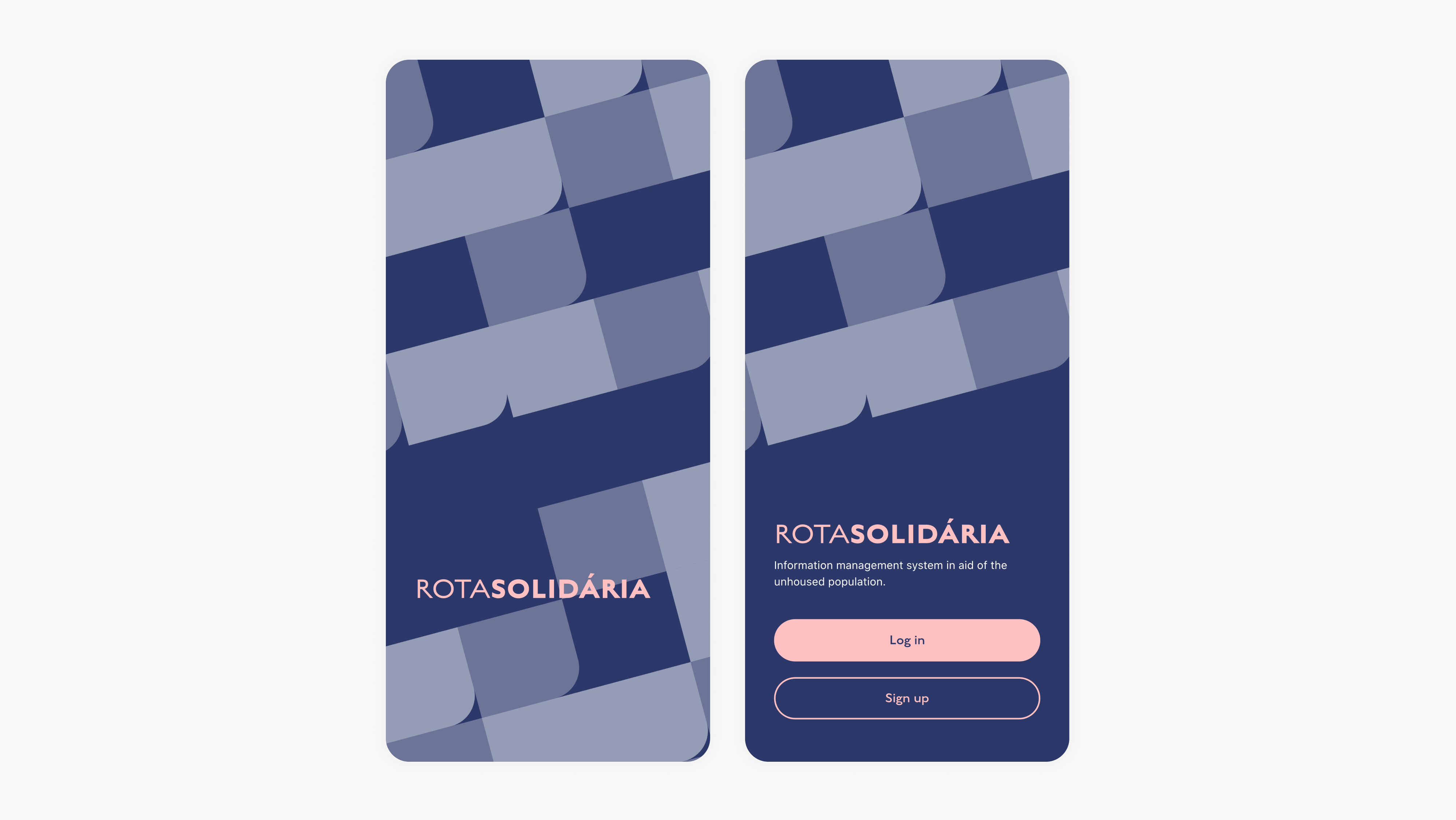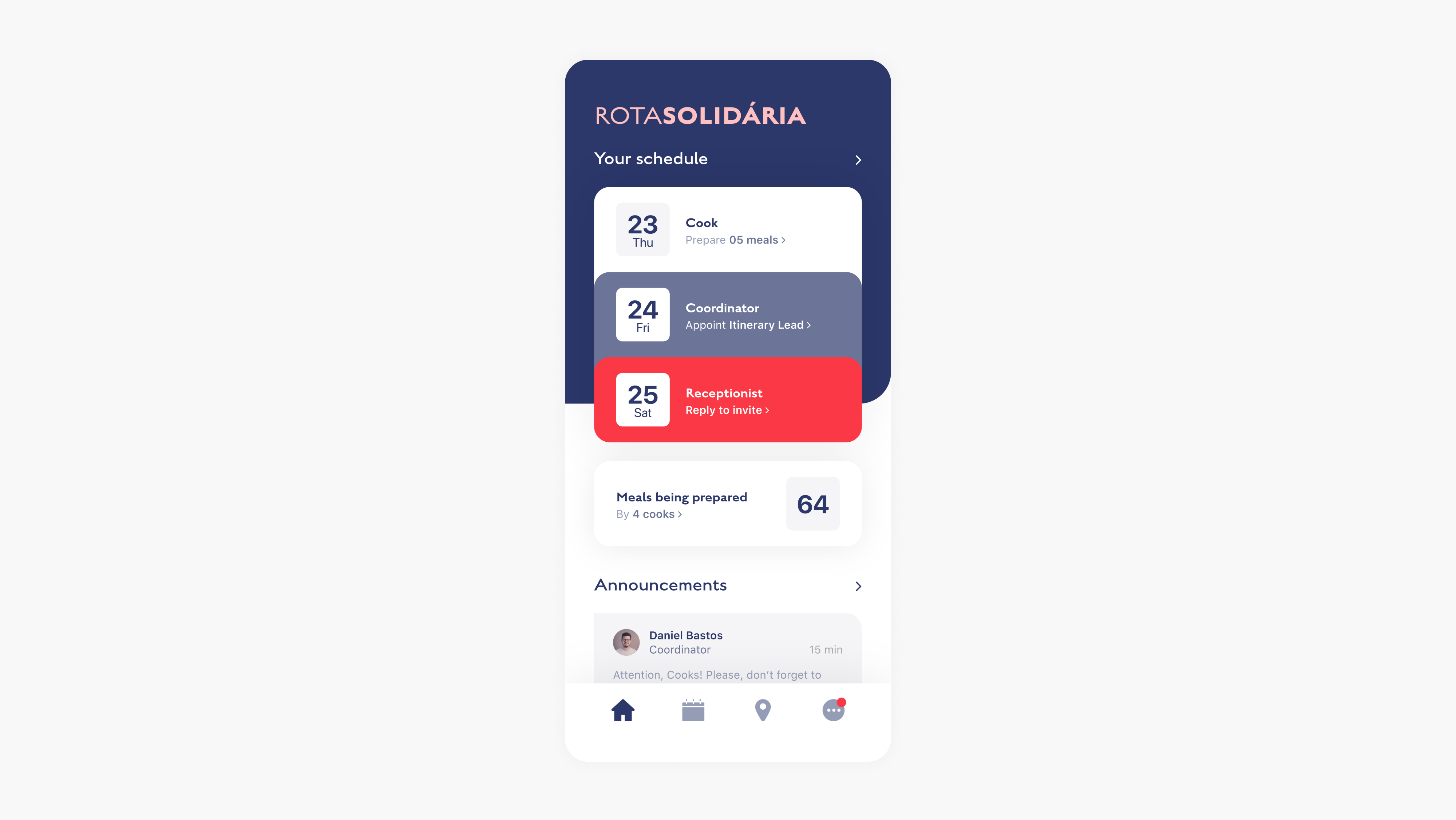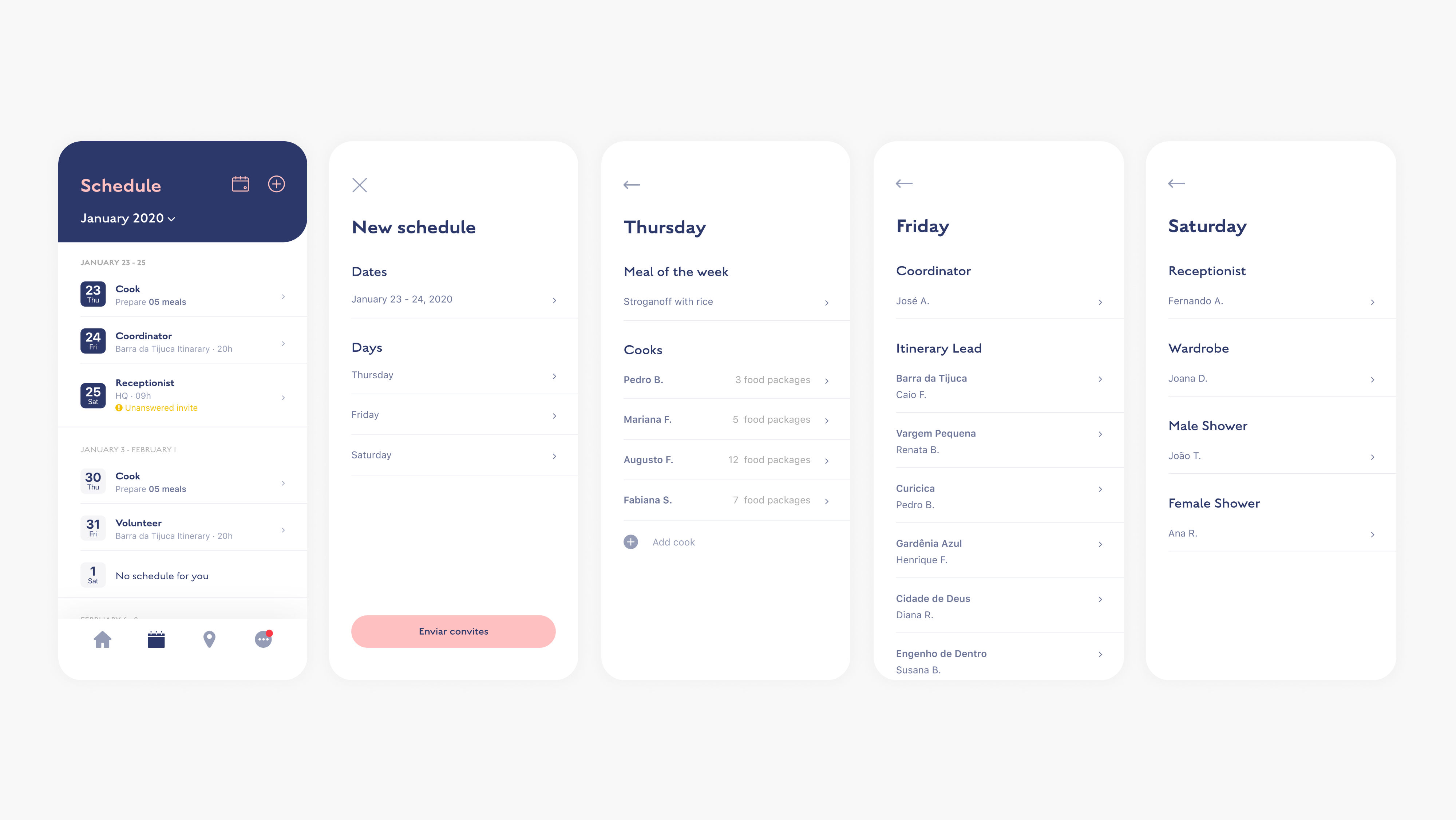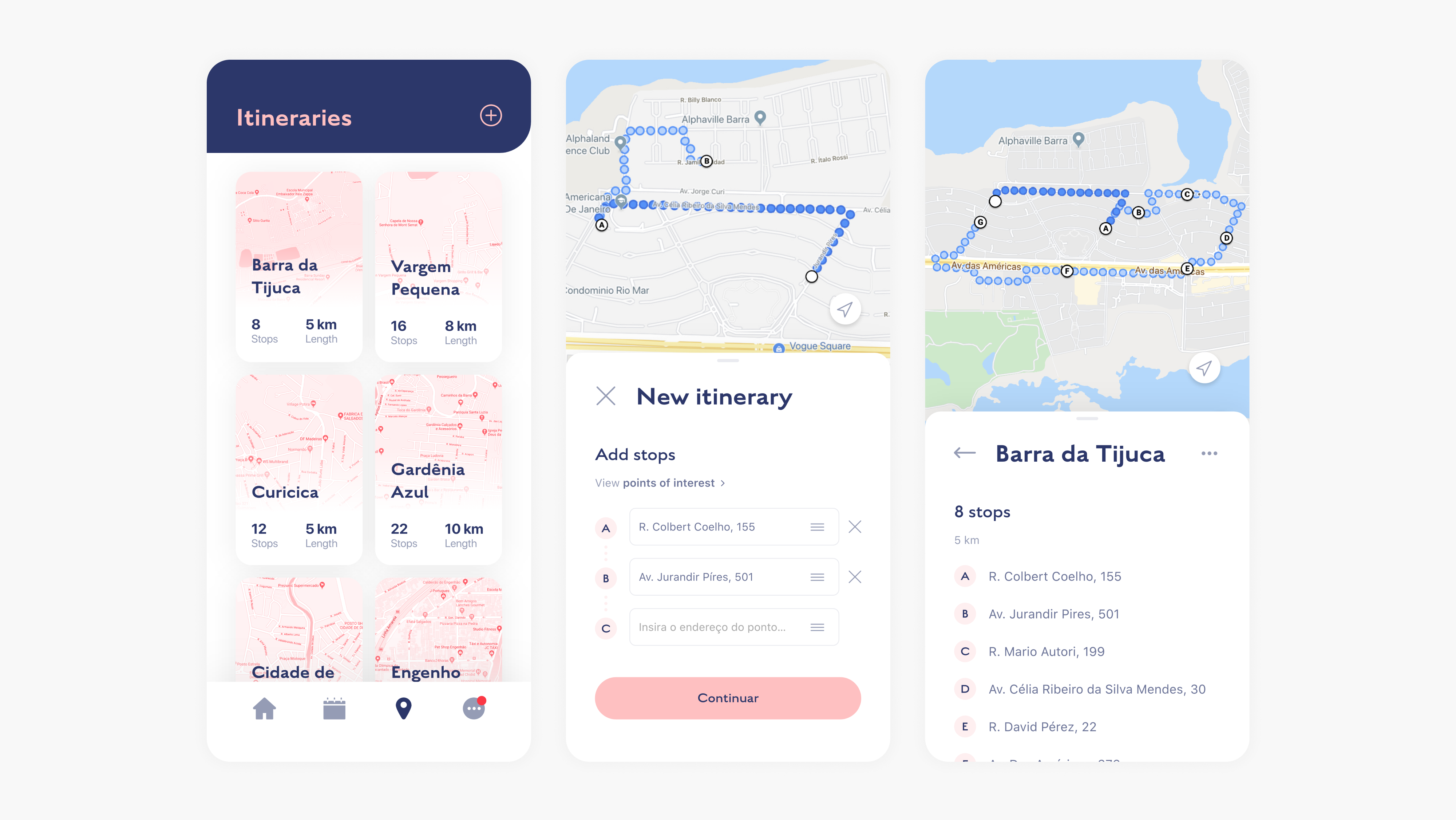Rota Solidária, an information management system in aid of the unhoused population
Client Confidential
Year 2020
My role I was the sole designer, leading research, design and developer hand-off from start to finish

Overview of the app UI.
The client
A nonprofit organization that carries out community services in the city of Rio de Janeiro, Brazil. They drive around the neighborhood in search of unhoused individuals to donate food, blankets and clothes. They are also invited to the association's headquarters to access basic hygiene, warm meals and healthcare.
The client requested confidentiality, so information identifying the association will be omitted.
The problem
There are many people and steps involved in carrying out these activities, such as volunteer scheduling, the defining itineraries, and the preparing the meals to be donated.
The project coordinators find themselves burnened by the many Excel sheets, Whatsapp chat groups and paper forms used in the planning phase, which interferes in the quality of the service provided to the unhoused population of the region.
Project goal
Facilitate the management of people and data involved in the activities carried out by the organization.
Rota Solidária means “solidary itinerary” in Portuguese.
Research methods
Service Visualization Map
To understand all the complexity of the steps and people involved in the planning and execution of the activities, and also to help identify opportunities and come up with solutions.Desk Research
A deep dive into the organization, its activities, mission, vision, values, and a benchmark study.Focus Group
Since not one volunteer knew the whole process, some of them were invited to a focus group where one of them could complement the other's account and provide a more complete overview of their needs.Clickable Prototype
A clickable prototype was sent to the volunteers to test and validate the product features a few times over the course of the project.Key focus group questions
- What are the steps and necessary information to plan and execute the activities, from beginning to end?
- How do you divide the responsabilities along the steps?
- What does the schedule look like, in terms of dates, times and frequency?
- What is the general profile of the volunteers?
- How are volunteer and activity data management currently done?
- Which product features do you think could help facilitate these activities?
Through these tools it was possible to extract an overview of the activities and the main volunteer pain points.
Main pain points
Data collection
It's common to run out of meals too soon during the itineraries. That's because they don't know how many meals have been donated on each stop of the itinerary in the past, making it harder to plan the number of meals for the following week.Having to rely on memory
Many times, during their daily life outside the organization, the volunteers identify spots in the neighborhood with unhoused individuals that could be added to the donation itineraries, but they end up forgetting it when it's time to set up a new one.Food package distribution
The cooks, which are volunteers responsible for preparing the meals to be donated, receive an amount of disposable food packages and are supposed to give them back with the prepared meals inside. However, the information of who took how many packages isn't written down anywhere, so the coordinators are not able keep track of it.Lost information
Important information such as volunteer schedules, the meals of the week, and general announcements are lost in oral communication.With all this information in hand, the features ideation and information architecture phases went on.
Due to the portable nature of the device, it was decided that the solution would be a mobile app. With the go ahead of the client, the user interface was then designed.
The color pallete, typography and iconography was based on the organization’s visual identity.

Splash screen and Login / Sign up.
Homepage
It works as a summary of all the relevant information for the users. Offers quick access to their weekly schedule, the number of meals being prepared, and also shows the latest announcements from the organization.

Homepage.
Schedule
Here coordinators can schedule the volunteers to their respective roles. When that happens, they receive a notification to accept or refuse the role, and also a reminder close to the date. They can also view the schedule at any time.
Thursday
Thursday is meal prep day. So here is where the coordinator notes which cooks received how many food packages and sets the meal of the week. The cooks receive this information on a notification to help them remember their responsabilities.Friday
Friday is the day to go out on the set itineraries and donate the prepared meals. Each itinerary is automatically assigned to the volunteers who live closer to its stops. Then, they receive a notification and can accept or refuse that invitation, letting the coordinator know how many people will actually join that week.
Schedule, New schedule, Thursday, Friday and Saturday screens.
Itineraries
The coordinators can create the itineraries which will take place on Friday nights.

Itineraries, New itineraries and View itinerary screens.
Menu
To facilitate communication, users can receive all kinds of notifications in the app, including announcements. It's also possible to access a list of the individuals they have previously assisted, which was a feature request from the clients.
Point of interest
To include as many spots in the neighborhood with unhoused individuals as possible in the donation itineraries, this feature allows the user to record a location when passing through one of these spots during the week.
Menu and Record point of interest screens.